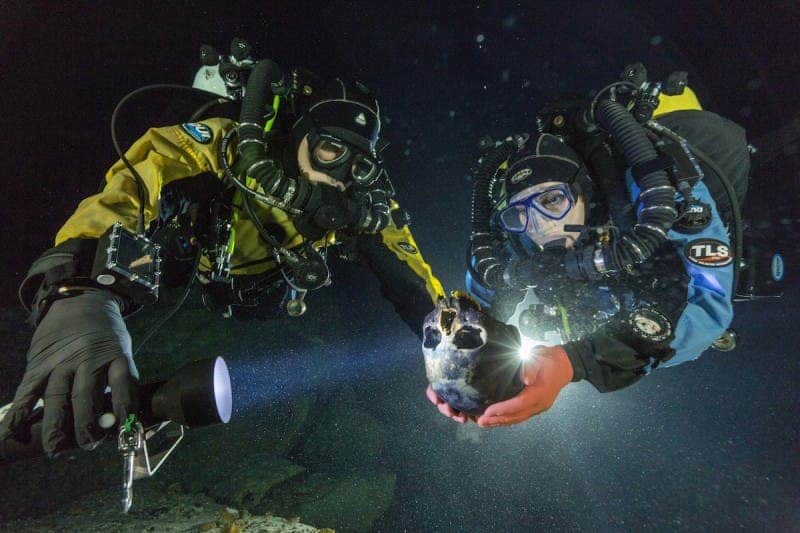In what is quite an exciting study, a mixed team of researchers and cave divers announced the discovery of a near-complete early American human skeleton with an intact cranium and preserved DNA.
Over 40 meters (130 feet) below sea level, in the Hoyo Negro area in Mexico’s Yucatan Peninsula, there lies an intricate cave system which was once above the sea. There, the divers found not only the bones from a teenage female, but also bones from extinct animals.
“These discoveries are extremely significant,” said Pilar Luna, INAH’s director of underwater archaeology. “Not only do they shed light on the origins of modern Americans, they clearly demonstrate the paleontological potential of the Yucatán Peninsula and the importance of conserving Mexico’s unique heritage.”
Indeed, the discoveries are significant on many levels. First of all, finding paleontological and anthropological remains in underwater caves is always quite interesting – definitely not something you do every day. Second of all, this is the first time researchers have been able to match a skeleton with an early American (or Paleoamerican) skull and facial characteristics with DNA linked to the hunter-gatherers which inhabited Asia some 20.000 years ago (they started to move towards the Americas some 17.000 years ago). This is also one of the oldest skeletons ever found in the Americas, and it is clearly the most complete skeleton older than 12,000 years, including preserved DNA and almost all the body parts
According to the paper’s lead author, James Chatters of Applied Paleoscience:
“This expedition produced some of the most compelling evidence to date of a link between Paleoamericans, the first people to inhabit the Americas after the most recent ice age, and modern Native Americans. What this suggests is that the differences between the two are the result of in situ evolution rather than separate migrations from distinct Old World homelands.”
The conditions in which the findings were made were extremely difficult, which is why archaeologists and anthropologists had to collaborate with professional divers in what is a laudable multidisciplinary work. The effort made by the divers is complex and difficult as the one made by researchers.
Alberto Nava with Bay Area Underwater Explorers explains:
“We had no idea what we might find when we initially entered the cave, which is the allure of cave diving,” said Nava. “Needless to say, I am incredibly proud to be part of the efforts to share Hoyo Negro’s story with the world.”










